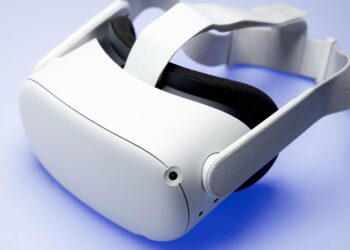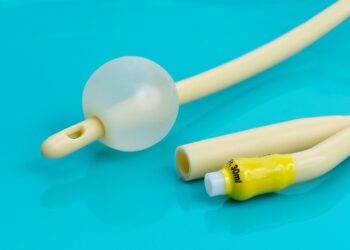Shining a specific red light frequency on a healthy person’s back for 15 minutes can reduce blood sugar level rises following food consumption, researchers have found.
Lengthy exposure to LED lighting, in the absence of sunlight, may have significant long-term consequences for human health, including dysregulation of blood sugars, said the authors of a new study published in the Journal of Biophotonics. The prominence of LED lighting in modern technology and environments, and the fact that LEDs emit towards the blue end of the spectrum with very little red, may be a potential public health issue, they warned.
Researchers from City, University of London and University College London (UCL)
found that 670 nm-length red light stimulated energy production within mitochondria leading to increased glucose utilisation. Specifically, those exposed to red light had a reduced degree of blood sugar elevation following glucose intake by 27.7%, compared to those who weren’t exposed, and a 7.5% reduction in maximum glucose spiking. The intervention may reduce damaging fluctuations of blood glucose on the body, the authors said.
Dr Michael Powner, department of optometry and visual science, City, University of London, and lead author, told Medscape News UK that he could see red light being used to support current diabetes management recommendations. “If, following red light exposure, the reduction in glucose spikes after eating are repeatable in people with type 2 diabetes, red light could be used as an additional tool for blood glucose control, perhaps by incorporation in domestic/office lighting,” he said.
Red Light Impacts Blood Glucose
Mitochondria regulate metabolism, but solar light influences its rate. In addition, production of ATP by mitochondria declines with age and disease.
“We now live in a world where blue light is dominant because, although we do not see it, LED lights are dominant in blue and have almost no red in them,” explained Professor Glen Jeffery, professor of neuroscience, Institute of Ophthalmology, University College London (UCL), and co-author, in a press release. This reduces mitochondrial function and ATP production, he said, leaving internal environments “red-starved”.
However, research had established that long wavelength light between approximately 650-900 nm could increase mitochondrial production of ATP, and may increase glucose demand, wrote the authors.
The researchers had previously found that red light reduced systemic glucose after feeding in bumblebees, and so wanted to investigate whether this translated to humans.
For the study, 30 healthy participants were randomised into two groups: 15 in the 670 nm red light group (mean age 41.1 years), and 15 in the placebo (no light) group (mean age 38.3 years). Participants had no known metabolic conditions and were not taking medication.
Individuals in both groups had an initial control oral glucose tolerance test (OGTT), and within 7 days had a second OGTT, during which the treatment group received a 15 minute 670 nm light exposure 45 minutes prior to consuming glucose. Placebo group participants were positioned identically for 15 minutes but the 670 nm light was not turned on.
Blue Light Potentially Toxic Without Red
“Long-term exposure to blue light is potentially toxic without red,” said Jeffrey. “Blue light on its own impacts badly on physiology and can drive disrupted blood sugars that may in the long run contribute to diabetes and undermine health spans.”
Red light exposure had been reported to slow progression rate or reduce symptoms in conditions such as Parkinson’s disease and dementia, explained Powner. It had also been reported to reduce pain and inflammation in osteoarthritis, and speed up healing after injury. “However, in each case this has been reported to occur before symptoms become advanced,” Powner underlined.
The researchers stressed that the study was conducted in healthy individuals and that “a bridge between our data and diabetic subjects has yet to be made”. However, they suggested the non-invasive, non-pharmacological technique had the potential to have an impact on post-prandial diabetes control, as it could reduce damaging fluctuations of blood glucose.
“Pre-1990, we all had incandescent lighting, which was OK because it had the balance of blue and red similar to sunlight. But there is a potential health span time bomb in the change to LEDs in an ageing population,” warned Jeffrey.
“The lack of red/near infrared light in some LED lighting is a concern for health,” Powner said. He explained that further research would be required to establish whether current LED lighting had contributed to the rise in diabetes cases.
People should be encouraged to spend more time in daylight, said Powner. “There is a wealth of evidence that longer daily exposure to moderate sunlight is beneficial for health.”
Commenting for Medscape News UK, Professor Russell Foster, professor of circadian neuroscience, University of Oxford, said, “At this stage, the use of red light treatment for the management of diabetes 2 represents a possible approach, but the direct health benefits remain unproven.”
Professor Keith Frayn, emeritus professor of human metabolism, emeritus fellow at Green Templeton College, University of Oxford, told Medscape News UK that any application to diabetes was a long way off, and more understanding was needed as to whether it was a true metabolic effect or whether it had more to do with the heating effect of the light source.
“If the mechanism can be established, then we will need studies in people with diabetes, and we will need to know how this can be done in a practical way,” said Frayn. “Diabetic patients sitting shirtless in front of red lights hardly sounds a practicable therapy at present,” he remarked.
Disclosures:
The authors declare no conflicts of interest.
Funding:
Sight Research UK.
Source link : https://www.medscape.com/s/viewarticle/will-more-red-light-home-keep-your-blood-glucose-check-2024a10003k9?src=rss
Author :
Publish date : 2024-02-22 14:10:00
Copyright for syndicated content belongs to the linked Source.








